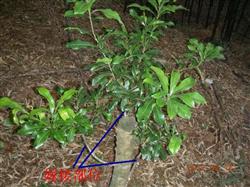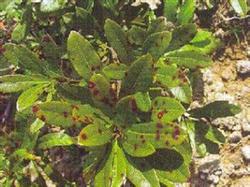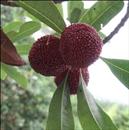There is a knack for grafting red bayberry seedlings.

Red bayberry seedlings generally use branch grafting, mainly cutting grafting. The scion selected the high-yielding tree with strong growth and entered the full fruit stage, and cut the 1-2-year-old branches from the periphery of the middle and upper part of the crown. Wild seeding seedlings or self-sowing trees were selected as rootstocks to sow seeds, and the seedlings were cultured after 2-3 years. The grafting of red bayberry is carried out before sprouting in spring, and early grafting is more advantageous, but if it is too late, the survival of the interface will be affected by sulfur injury. it is generally carried out from early February to late March. Each scion is 6-7 cm long and then wrapped with plastic film, preferably covered with soil to moisturize. The sap flow of bayberry is exuberant, which affects the survival rate of grafting, especially on large rootstocks. In order to restrain the tree potential and reduce the sap rise at the root, the following methods can be used. 1. Grafting on the spot and cutting off the root system. It is often used for 2-3-year-old rootstocks. After grafting, the rootstock is deeply cut off from both sides of the rootstock cultivation border and part of the main and lateral roots are cut off. 2. Grafting in different places. Before grafting, dig up the rootstock, cut off some of the main and lateral branches, change the land for planting, and then graft. 3. Indoor grafting. The rootstocks were dug up and grafted indoors, used for 2-3-year-old rootstocks, or 3-4-year-old rootstocks excavated from the mountains, then pseudo-planted or directly planted on the planting site. 4. Leave branches for grafting. The rootstocks are planted first, and then grafted on the spot, which are widely used for large rootstocks. That is, the grafting is carried out on the main branch and the other branch is left as a "hanging water branch" to attract water to flow to the branch and slow down the growth potential of the grafting part so as to improve the survival rate of grafting.
- Prev

Main Diseases and Control methods of Waxberry
1. Bayberry cancer disease 1. Symptoms: red bayberry cancer disease is a bacterial disease. Mainly damage the branches of 2-3-year-old fruit trees, mostly form tumors on the branches, the tumor is nearly spherical, the size is different, the cork is very hard, brown to dark brown. In general, the tumor on the branch begins to grow in early April, 7-8.
- Next

Occurrence and Control of Copper deficiency in Waxberry
Bayberry shoot blight is caused by boron deficiency, so planned boron supplementation can eliminate the harm of the disease. Spray 0.1 to 0 during the growth of bayberry. 2 Borax solution for 2 to 3 times can effectively prevent and cure the disease. Root application can also be used, with 0.3 to 0.6 kg of borax per mu for mild boron deficiency and 1.3 per mu for severe boron deficiency.
Related
- Moge, come on! The staff of the peasant association in the producing area of cantaloupe were frightened when the crowd gathered.
- Causes and Solutions of low Fruit setting rate of Apple
- Symptoms and control measures of passion fruit virus disease
- Fruit growing lesson: how do apple orchards keep high yields?
- Can you build orchards in the mountains? What are the pros and cons?
- How to manage the coloring period of Crisson grape?
- This paper introduces the processing technology of two kinds of fig products.
- How much is a month for retired teachers in rural areas by 2020?
- How can strawberry planting increase sugar content? We should pay attention to management in many aspects.
- What are the cultivation techniques on how to improve the yield of golden fruit?

